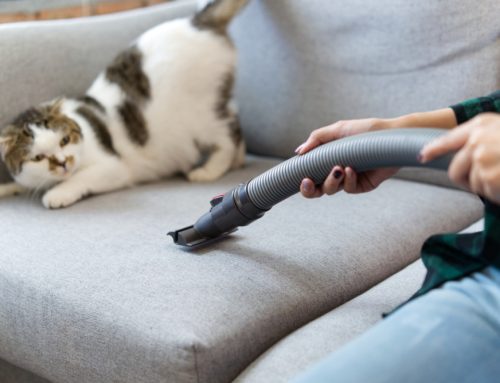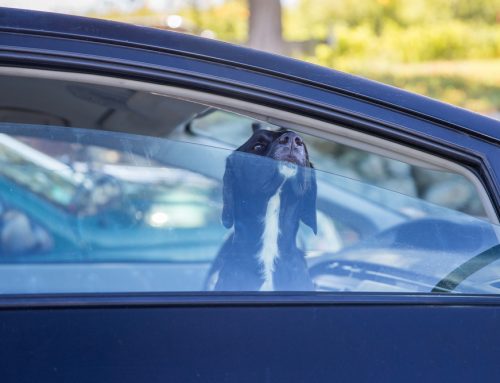Pets love play time, and each one has their own favorite toy. Toys can be beneficial to keep your pet happy, and calm during times of stress, but knowing which ones are safe for your pet can be difficult. The team at Billings Animal Family Hospital would like to help you make the right choice for your four-legged friend.
Overall safety measures for your pet
Animals have a frustrating tendency to enjoy playing with dangerous items. Here are some guidelines to watch for when pet-proofing your home.
- Sharp edges — Never allow your pet to play with objects that have sharp or rough edges, which can lead to lacerations in and around the mouth.
- Small parts — Be aware of small parts that may come off the toy while your pet is playing, because your pet could accidentally swallow the pieces and choke.
- String and ribbon — Keep out of your pet’s reach string, ribbon, rubber bands, and panty hose, which can become a gastrointestinal (GI) obstruction and require surgery, if ingested.
- Squeaky toys — Monitor your pet closely when playing with squeaky toys. Many animals become intent on finding the source of the noise, destroying the toy, and leaving behind small pieces they could swallow.
- Toys with batteries — Never allow your pet to play with anything containing batteries. A punctured alkaline battery will leak a corrosive substance that can burn your pet’s mouth, esophagus, and GI tract.
- Sticks — If your pet loves finding sticks outdoors, be watchful. The wood can splinter and injure your pet’s mouth.
- Latex — Like humans, pets can be allergic to latex. Know whether your pet suffers from this sensitivity before giving them a latex toy.
- Painted toys — Never let your pet play with painted toys, because they can chew off the potentially toxic paint.
Safe toys for active pets
If your pet has copious amounts of energy and tends to be aggressive with toys, you will need to provide something that is durable but will not harm their sensitive mouth.
- Rope toys versus bones — Choose rope toys made with tightly woven materials rather than bones, which, especially if cooked, can easily splinter and injure your pet’s mouth, or cause serious damage to their GI tract. Woven toys that are bone-shaped with knotted ends can be carried around easily, and also are great for a tug-of-war game. However, if any woven pieces come loose, dispose of the toy immediately.
- Rubber balls versus tennis balls — Playing fetch for hours on end delights many dogs, but give them a rubber ball rather than a tennis ball, because a tennis ball’s abrasive outer covering can irritate your dog’s mouth if they chew on them for long periods of time. Tennis balls can also damage your dog’s tooth enamel. A determined dog can quickly gnaw through a tennis ball, leaving small pieces that can become a choking hazard, whereas they cannot easily chew through a hard, resistant rubber ball.
My pet needs a long-term distraction
If your pet suffers from separation anxiety when you leave them, or they are simply prone to anxiety, a toy that distracts them from the stress may help.
- Puzzle toys versus antlers or hooves — Antlers and hooves are frequently billed as a natural chew for pets, but they are made of keratin, an extremely hard substance that can fracture the teeth of a pet who gnaws aggressively. Splintering of the outer layer is also a possibility, resulting in tiny pieces that your pet could swallow and choke, or could damage their GI tract. Puzzle toys are a great replacement. They stimulate your pet’s mind by requiring them to use their snout or paw to open a compartment, delve into a canister, or navigate a maze. Always give your pet a yummy treat after they solve the puzzle.
My pet needs comforting

If your pet loves to carry a soft toy as a companion and the toy comforts them in stressful situations, choose carefully—never rely on cuteness level.
- Size — Choose a toy that is large enough that your pet will not be able to swallow the toy itself or any parts.
- Filling — Many toy fillings and attachments are problematic if ingested, especially nutshells or polystyrene beads, as well as others that are not so likely to be accidentally consumed, like large buttons. If any of your pet’s toys are torn open, no matter the filling, immediately remove the toy to prevent ingestion.
A great deal of persuasive advertising is used in the world of pet chew toys, so use this information as you navigate your way down pet store aisles looking for the appropriate toy for your pet. Do not hesitate to contact Billings Animal Family Hospital with any questions about the best chew toys for your pet, or if they have accidentally swallowed a toy piece.








Leave A Comment